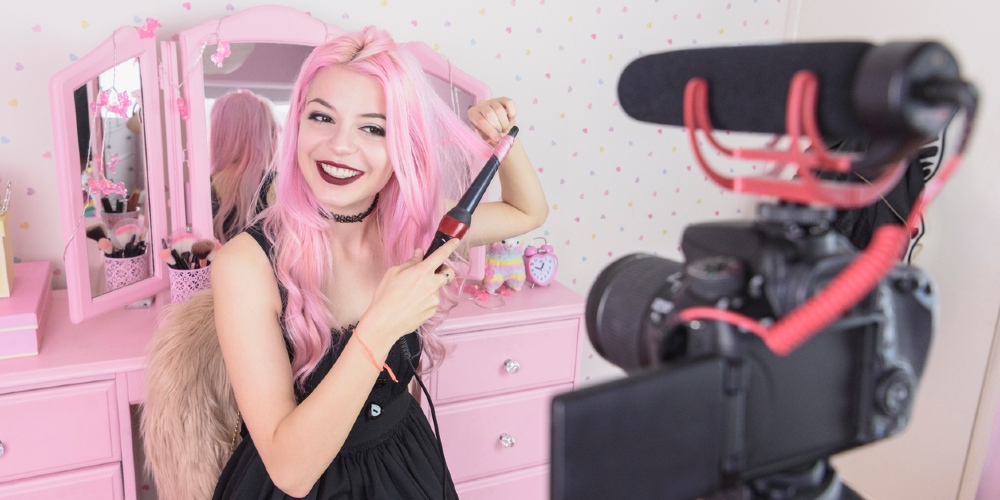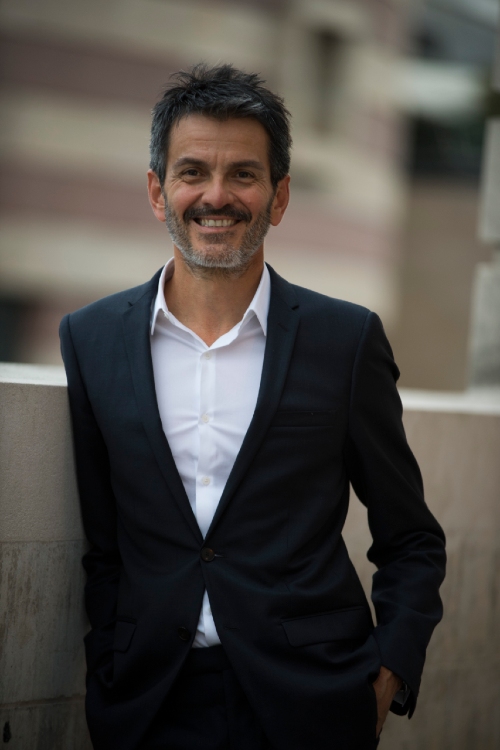 If you’ve ever sat in a salon chair and breathed in the oddly comforting smell of professional salon products while the stylist snips away to the new and improved you, you’ve practically shaken hands with this episode’s interviewee.
If you’ve ever sat in a salon chair and breathed in the oddly comforting smell of professional salon products while the stylist snips away to the new and improved you, you’ve practically shaken hands with this episode’s interviewee.
Randall Chinchilla started his career at Cadbury Schweppes and later spent almost two decades at Procter & Gamble before making his foray into the world of professional salon product influencers. Throughout his years in the influencer marketing industry, he’s used earned and owned media to reach customers in unique and authentic ways for Coty marketing.
So grab your OPI polish for an at-home mani-pedi, turn up the volume on this influencer marketing podcast, and learn how Randall uses influencers to make Coty’s brands household names both at home and in the salon.
Key Takeaways:
- Success in influencer marketing depends on your and your teams’ dedication to developing a digital skillset.
- Coty works with both B2B and B2C clients. A particularity is that the trusted influencers Randall works with are not family and friends, but rather salon professionals.
- Brands should invest in developing their own communities of people who already love their brands – and they should nurture those relationships.
- Earned media can be measured as Reach x Frequency x Engagement Rate.
- Set very clear targets on the percentage of your total content you want to come from influencers.
- Measuring success in earned media is a major opportunity because the influencer marketing industry has not standardized KPIs or how they should be calculated.
Interview with Randall Chinchilla
Perlu: Hello and welcome to the Perlu Podcast: Influencer Marketing Reimagined. A podcast where we chat with influencer marketing professionals, social media influencers, bloggers, YouTubers, podcasters, you name it, about what has led to their success.
Today, we have the pleasure of hearing from the global VP of influencer marketing at Coty, Randall Chinchilla. Randall leads influencer marketing for Coty’s professional division, responsible for setting the division’s influencer marketing global strategies across the Coty salon professional brand portfolio, which includes leading salon brands such as Wella Professionals, System Professional, Sebastian, Nioxin, Sasoon Professional and OPI.
Randall is an experienced brand builder, passionate about unleashing the power of earned and owned media to spark authentic conversations that help brands cut through consumer cynicism and traditional advertising fatigue. Creative and inquisitive, Randall believes the power of analytics and seamless collaboration across multidisciplinary teams gets the job done.
For Coty marketing, Randall is responsible for partnering with local markets to activate the global strategic influencer marketing vision, laser-focused on building and leveraging influencer engagement to generate earned media coverage, drive visibility, build branding equity, credibility and preference.
I’m your host, Alexis Trammell. If you enjoy today’s episode, we hope you sign up for Perlu to connect with Coty and to learn more about how you can grow your influencer marketing career.
Randall, thank you so much for joining us today.
Randall Chinchilla: Thank you, Alexis. It’s an honor to be here and I also appreciate your introduction. I actually am a bit overwhelmed and my face is going a bit red after your introduction. But thank you very much. I appreciate it. And it’s a pleasure to be here, and hopefully, I can share some insights that can help the audience sharpen their earned media and their influencer marketing skills. That would be my goal for today.
Perlu: Thank you so much. So why don’t you go ahead and tell us a little bit more about yourself?
How did you become the global VP of influencer marketing at Coty?
Randall Chinchilla: Yeah. Thank you. Well, I mean, unfortunately, it’s gonna be a long answer to that, but I think it’s important because it kind of brothers a perspective on how I got to this role.
Just to tell you a little bit about myself, I started my career at Cadbury Schweppes. I’ve always been involved in marketing-related work. I spent 17 years of my career at Procter & Gamble and the past three and a half years I’ve been working for Coty marketing as the influencer marketing VP for the corporate professional division, as you stated before. While at P&G, I held positions in Latin America, the U.S. and Europe. I had local roles as well as global roles in leading influencer marketing and brand public relations at the time for bigger, better brands too, such as for Pantene in the U.S., Head and Shoulders.
Brands that are becoming a priority for your U.S. audience, such as Tide and Downy, I had the pleasure and the opportunity to work with and for. I’ve also done some things with corporate affairs on and off, but I’ve always been very much linked to brand PR — mainly managing non-paid media strategies and traditional PR back in the day. So I always connected to that type of brand building, I think, I was witness to the whole advent of social media. I’m going to date myself, but this sounds like the days where having a website or a Facebook page or a Twitter account for a brand was a novelty and a curiosity. The marketers used to do that, I’ll say, as a luxury. It came after everything else — after TV, after radio and all the different consumer touch points back in the day. And in reality, I believe firsthand the whole, you know, how the power has shifted.
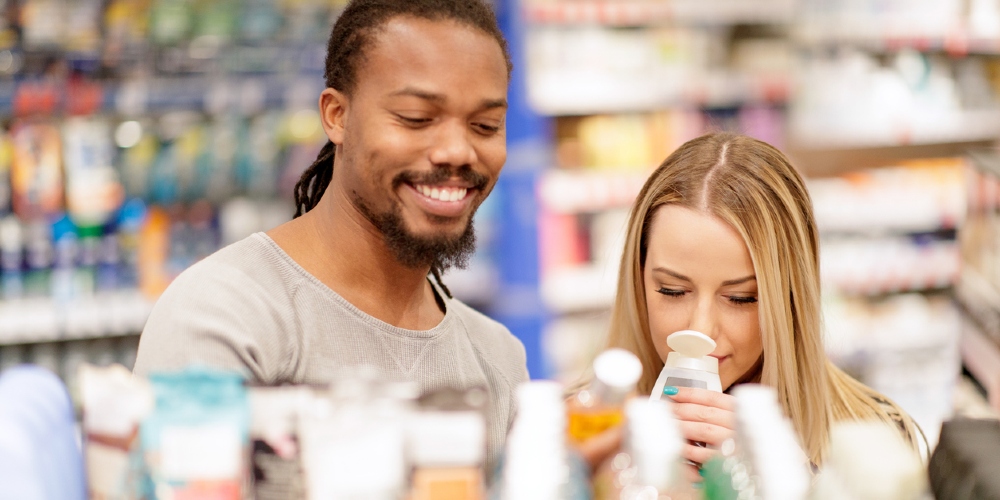
The communications power has shifted from brands talking to consumers, to consumers actually being in control of the brands through their presence on social media, and that’s the way brands are being built today. That’s one of the challenges that the big companies are facing is how pretty much anyone who’s got an audience and can connect with a manufacturer in China and launch a cosmetics line and actually become quite successful. So that’s a long way to say how I got to where I’m at, but I had the opportunity to witness all this transition, always being very conscious that it was a big opportunity. Also, especially for large companies like Procter, one of the things that at the time we were struggling with was that they shifted. We started witnessing how the traditional organizational model that we had, started faltering.
We had to ask, “Well, who does what?” Is it the PR person who handles social media to the digital team? Is it the marketing team? Is it the PR team? So I think we started experiencing some of that. And then fast forward to 2016, Procter & Gamble sells the specialty beauty brands, which included the salon professional division which I was a part of, and we transitioned to Coty. That immediately doubled the size of Coty as a company.
So new positions were created, one of which was the position of vice president of influencer marketing. That role was offered to me just based on the profile that I had. But the role came without a script cause nobody really had held it before.
Discover New Opportunities in a Fraction of the Time
It was really a challenge, but also a very exciting opportunity because having witnessed what I have witnessed in the past, it allowed me to, in some ways start thinking about or putting in place the structures that I thought were relevant for the way brands were being built in this new industry context.
I’ll leave it at that because I could talk for a little while on this but roughly that’s the way the role came to me. I was, I think, professionally ready for it. I was also very strict about pushing myself and developing and reinventing my career in terms of my digital skills.
I’d been obsessed with doing that the past three years. Anyone who works for me, is under pressure in a good way to know more about digital than I do. But that has been something that I’ve become obsessed with in the past few years. That’s a long answer to your question.
Perlu: That’s fascinating. Oh my gosh.
How does marketing Coty’s professional brands differ from B2C influencer programs? You work mostly in the professional division, so what would a Perlu influencer need to do in order to work with you?
Randall Chinchilla: Well, that’s a great question.
So just for the benefit of the audience, the way you want to think about our brand is we are both a B2C and B2B. But most of our business happens with B2B. And you can think about our brand as brands that are sold in the professional salon or in the professional nail salon as well.
They’re used and sold in bulk. One of the particularities about our industry when it comes to B2B is that from my experience throughout my career, having worked in many brands, this is one of the few categories where the number one influencer is not family and friends.
In our case, the number one influencer is actually the hairdresser or the nail technician. And the reason for that is when a lady or gentleman goes to the salon and they’re asking for advice on how to cut their hair or how to dye their hair, they’re not going to their friends and family necessarily to say, “Well, what shade should I use? What products should I use?” They rely on someone that they trust. That is the hairdresser or the nail technician. They are normally not asking which brand they’re going to use. They trust the brand that the hairdresser is using. So for us, the number one influencer by far is the hairdresser.
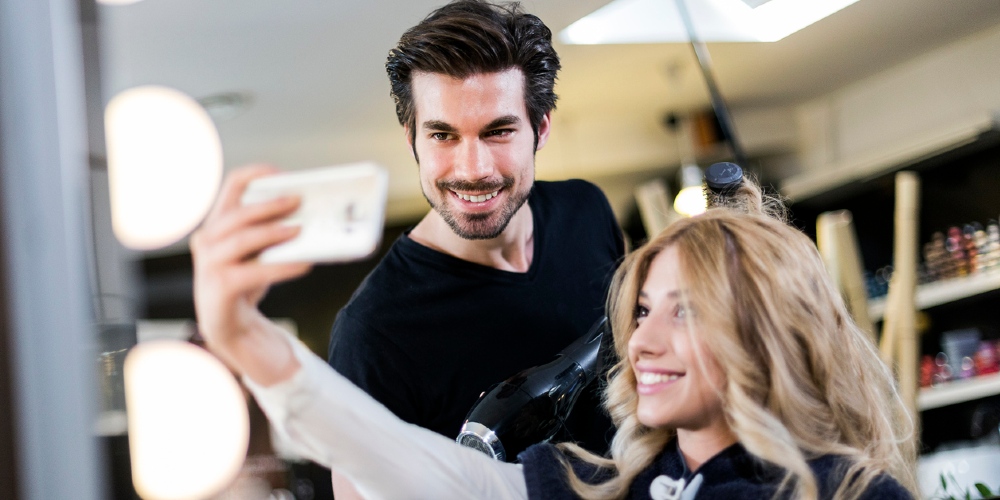
Hairdressers tend to be micro influencers. And first and foremost, they are professional hairdressers. They are not professional influencers. So for someone in Perlu to be able to work with us, I think if we were talking B2B, ideally they will be almost professional hairdressers, which I think would probably be challenging.
But when it comes to B2C, we also have a great opportunity. And I think depending on which brand, which problem we’re trying to advocate, what we’ll be looking for is someone who can authentically and credibly speak about our brands. There’s nothing worse than a useless paid partnership, in my opinion.
As long as someone believes in a brand and believes in a proposition and doesn’t feel shy about speaking about that product, I think that’s when you find a sweet spot that drives a win-win for the influencer and for the brand.
Perlu: Definitely. So thanks, Randall. I’d like to take a quick break to talk about Perlu the platform that all influencer marketing professionals should be using to connect with influencers.
It’s not a subscription-based directory. It’s a professional network of active influencers and sharing the brands partner with only the best, and you can sign up and try the platform for free today. No commitments or obligations. Here’s Brent Scott, Perlu’s director of influencer marketing to tell you a little bit more.
Do you have any stories of successes or just lessons learned that you could share with our listeners?
Randall Chinchilla: Oh wow. Yes, for sure. I have tons and let me start with some failures, right?
The first one that comes to mind is I was speaking about how, for us, micro influencers are the norm. Typically hairdressers, professionals who are not represented influencers necessarily. We started building our own community of people who used Wella — which is the number one selling professional color brand and our leading brand in our portfolio — and started building a community. An online community of hairdressers who are passionate about Wella. Basically, this is a non-paid group of people that we just have identified as people who are social media savvy and who are great content creators who like to speak about Wella so we figure, you know what, let’s build a relationship here.
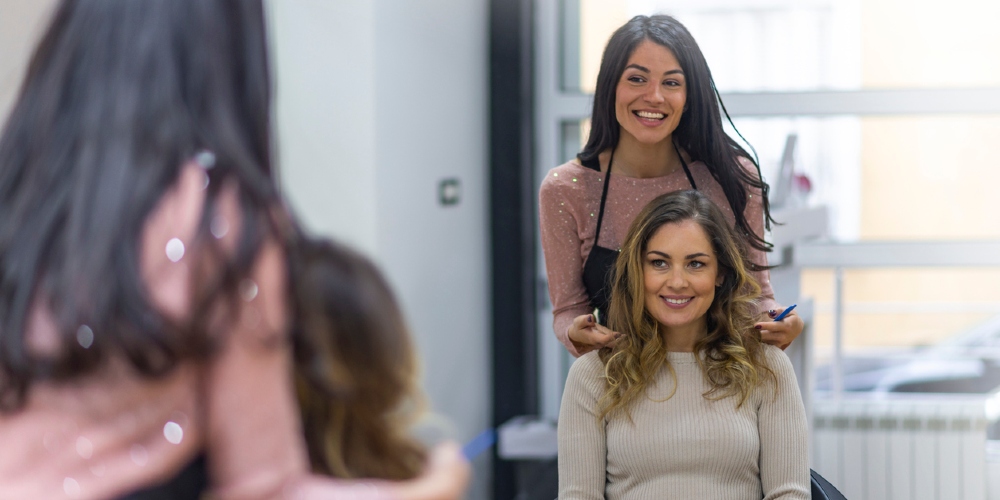
So anyway, we started identifying them, and we didn’t know exactly how to start this whole thing. This is, I’m talking now, three years, three and a half years ago maybe. We managed to launch a pilot in one market and we got our community of around 50 people, and we had the brilliant idea of developing an app. And we thought, okay, well, if we develop an app that’s a good opportunity for us to interact with them, they can be using that. We can deploy content, etc. Fast forward. I mean that was a total failure, right? Because in the end, the learning for us is that you have to meet people where they are. You don’t have to make them go where you are.
And what are people using? Of course, Facebook communities, they’re using WhatsApp, they’re using Instagram. So we’ve evolved rather than investing that amount of money — that we’ve wasted, by the way — developing an app that no one used. Because you know an app unused is a crime, and people don’t want to download apps that they won’t use.
That’s the fact. That’s the truth for you, me and everyone who’s probably listening to this. Now, we have a very healthy community. It’s grown a lot. But the interactions happen exactly as I described. They happen on Facebook groups. They happen through WhatsApp. They happen through Instagram and so on.
So that’s one big lesson for us. For people who are building communities, I want to save them time and money. And then we’ve also managed to harness the power of community building.
I absolutely understand and support partnering with agencies. That has its place and its time.
I also believe that brands should invest in developing their own communities of people who already love their brands, and nurturing those relationships. And that’s easier said than done.
In our case, we developed a community called the Wella Fashionistas. Those are, again, hairdressers — a non-paid community. Today it’s 4.2 million strong, which is really big for hairdressers. They have a very high engagement rate of 2.5%. But more importantly, they are contributing nearly 40% of all the content for our own platforms.
It’s coming from this community, right? It’s content that performs better. It’s a recognition for the artists because when we feature the content in our Instagram pages they feel honored. We’re growing it to be more of a symbiotic relationship where we’re helping build their careers while they’re helping us drive better and more authentic content and drive awareness for our brand.
So those would be two lessons on community building that I feel like we took years to get to and hopefully they can save time for others who are looking into building these types of efforts.
Perlu: That’s so cool. I love that you value those symbiotic relationships. Here at Perlu, that’s definitely one of our biggest core values is helping influencers grow their careers simultaneously.
How do you go about measuring success in Coty marketing programs?
Randall Chinchilla: Well, you know, if I had to boil it down to one word that our top management would say is “sales,” right? That’s the bottom line, right, are your problems building sales. And for me working in PR, I was always saying, well, but they’re intangibles. But at the end of the day that’s the measure. Now to answer your question very straight forward, as a proxy for that, we’re using earned media.
We track earned media, understood as Reach x Frequency x Engagement Rate, for all the combined accounts. Our accounts as well as our competitors’ accounts. We see how our brands are ranking across all our top markets. So that’s a proxy for how we’re performing in terms of being a loved brand or our brands being loved brands — how much organic chatter we are generating with our initiatives, with our ambassadors and so on. We feel confident that earned media is a good measure for that.
For content creation, because we do a lot of influencer generic content efforts, of course, we use the traditional content performance measures. So just engagement rates, CPR and others.
But we do set very clear targets on the percentage of the total content. What are the targets that we want to come from influencers? So, depending on the brand, some brands will go as high as 60%. And that’s great, right? Because that’s a way in which you also activate your communities to generate content that usually outperforms the branded content and is more effective in terms of cost.
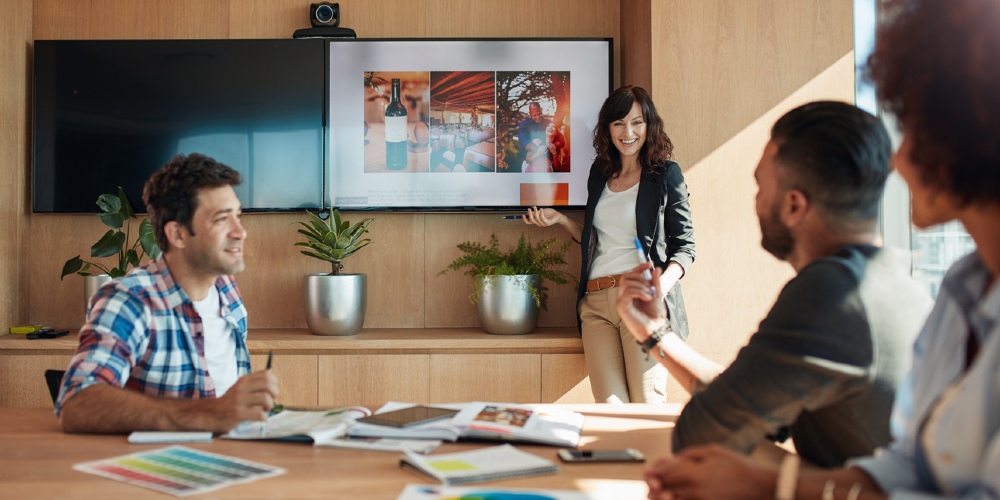
So those would be two. And we think that there is a subdivision — you can really go into a subset that tends to be confusing. But when I’m speaking to top management I boil it down to earned media, as I describe it, and content performance. I think that that is clear for everyone.
So it has taken us, by the way, three years, but these two measures are reported monthly in the scorecard that goes all the way up to our president of our divisional leadership team. So some markets are really held accountable to be performing and outperforming our competitors on earned media.
So that really helps. Earned media has been declared a top-down priority, in the top 10 key business performance metrics. So that is huge. And that was a game-changer for our programs. My team is obsessed with cracking sales directly.
Join the Ranks of Coty Marketing
Sometimes it’s difficult because when you’re dealing with a big online name that I shall remain unnamed here it’s difficult because you don’t get access to analytics. But we’re obsessed with figuring out how to make a direct link between our equalizer marketing programs and direct sales, not just conversion registrational conversions.
Perlu: Would you say that that’s one of your biggest pain points you experience when you’re managing influencer marketing campaigns — connecting the sales to the influencers?
Randall Chinchilla: I want to go back to four years ago. I hate to answer yes to that because I had a bigger pain point in the past.
And it was that I remember the days when we were doing brand PR, we were measuring impressions. We were measuring an ad equivalent value. And those measures were really intangible — top management really never engaged. You came back and said well we did decide this would have been worse for the process.
We have 60 billion impressions, so what does that mean for my business? To me, the question is out there and I have to agree with them, but I always felt frustrated because it was hard for me. It was hard for all of us to generate the level of traction that we needed from top management.
So I tell you, with our media, as I just mentioned a few seconds ago, we have tone management buy-in, which means that if I look at our entire portfolio, I guarantee you that influencer marketing will be in the top three investment choices of all our brands. So that is a very different world than when I was working, for instance, at Procter. It was when brand PR was number six, number five choice. It was a nice-to-have vocationally. I think the world has shifted in that way. So in some ways, yes, it is a pain point that we haven’t cracked necessarily in a way to convert the resources that we invest in the influencer market, and link it to sales.
I think that’s the biggest opportunity for the industry, of course, for us. But is it a pain point? I wouldn’t say it’s a pain point. I think it’s a big opportunity. I do have a lot of pain points and those are linked to measurement. I think one of the things that I found the hardest is that there’s been a proliferation of agencies behind social media and influencer marketing.

And I think there’s a space for them — that’s fine. It’s just that what I find more often than not is that even the same measurement is treated differently by different agencies. And what that causes is that every time you’re dealing with a new supplier, and that’s the success criteria, it tends to be confusing. Like what are we really measuring? So one of the things that we’ve done is we’ve taken a step back and we’ve tried to move everyone to our measurement. We’ve said, hey, we’re working with a third party supplier that just processes raw data. They don’t have any particular agenda.
And anyone who wants to work with us is going to be measured using our supplier. Not necessarily their methodology. As long as we’re on the same page and we’re working based on those KPIs, then great. But what I do find to be a point of confusion — and we spend a lot of time trying to crack this — is there are measurements out there such as earned media value which are thrown away quite loosely, but they are black-box measurements because depending on who you’re talking to, you cannot even find out how those are calculated. So I personally don’t like that, and I’d rather look at raw data, even if I cannot link it directly to dollars immediately. At least I can compare how I’m doing versus my competitors, and I can do it in an objective way.
That’s my preferred way to move forward. But I do find that being a pain point because if the industry was more harmonized and transparent on what success criteria is and how those KPIs are calculated, then I think it will be easier for everyone to understand who are the best performers.
So that will be one wish let’s say, that we have experienced.
Perlu: That makes a lot of sense. Yeah. Well, Randall, I can’t thank you enough for being on today’s show and thank you so much for all this valuable insight. You gave us some really unique perspectives here.
Randall Chinchilla: Yeah thank you very much. And I applaud the efforts of Perlu in terms of disseminating knowledge, but also in the services that you guys are providing, I’m looking forward to spending more time with you and your team. And I’m super thankful for the opportunity.
If anyone has any questions or wants to reach out directly to me, they can do so by going through my LinkedIn profile. They’re welcome to reach out. I’m always looking for new insights, new challenges. I believe talking with people from many very competitive brands always enriches my career.
So I’m happy to do a quick pre-call with anyone out there who’s curious and who found any value in what I shared or has any comments on it. I’m happy to help.
Perlu: Wonderful. Thank you so, so much.
Randall Chinchilla: Thank you, Alexis.
Perlu: And thank you to everyone listening. We hope you really enjoyed hearing from Randall Chinchilla at Coty.
If you like our show and are interested in what it takes to succeed in influencer marketing, check out our blog at blog.perlu.com for more podcasts and blog posts and sign up for Perlu at perlu.com to meet, mingle, connect, collaborate, and grow your career. We hope you join us for our next installation of the Perlu podcast: Influencer Marketing Reimagined.


